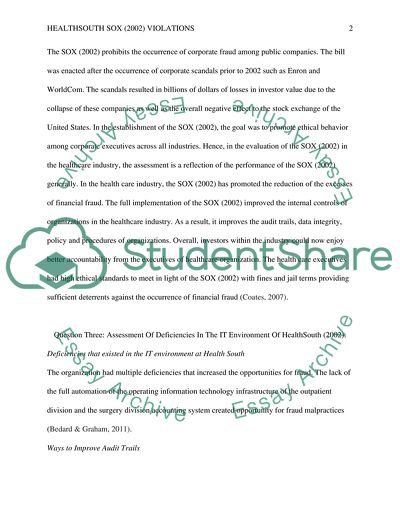Cite this document
(“HealthSouth SOX Violations Research Paper Example | Topics and Well Written Essays - 1250 words”, n.d.)
HealthSouth SOX Violations Research Paper Example | Topics and Well Written Essays - 1250 words. Retrieved from https://studentshare.org/finance-accounting/1655274-healthcare-organization-fraud-paper-on-selected-firm
HealthSouth SOX Violations Research Paper Example | Topics and Well Written Essays - 1250 words. Retrieved from https://studentshare.org/finance-accounting/1655274-healthcare-organization-fraud-paper-on-selected-firm
(HealthSouth SOX Violations Research Paper Example | Topics and Well Written Essays - 1250 Words)
HealthSouth SOX Violations Research Paper Example | Topics and Well Written Essays - 1250 Words. https://studentshare.org/finance-accounting/1655274-healthcare-organization-fraud-paper-on-selected-firm.
HealthSouth SOX Violations Research Paper Example | Topics and Well Written Essays - 1250 Words. https://studentshare.org/finance-accounting/1655274-healthcare-organization-fraud-paper-on-selected-firm.
“HealthSouth SOX Violations Research Paper Example | Topics and Well Written Essays - 1250 Words”, n.d. https://studentshare.org/finance-accounting/1655274-healthcare-organization-fraud-paper-on-selected-firm.


